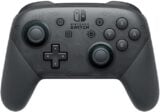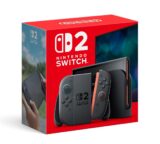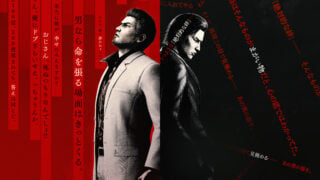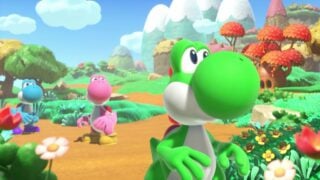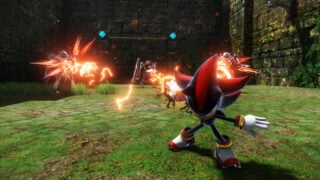Zelda: Echoes of Wisdom feels like a top-down Breath of the Wild
Echo and bind mechanics could shake up the 2D Zelda formula, if Nintendo isn’t afraid to commit to the bit
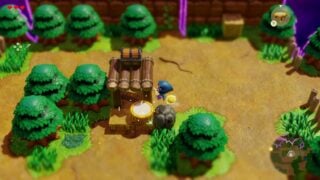
It seems 2024 is the year that Nintendo’s princesses finally get their time to shine. It’s, however, all the more just for Zelda, given that the Hyrulian princess has endured 38 years of having her name attached to a series that she has never had a starring role in (at least if you ignore the terrible third-party CD-i games in the early 90s).
But in making the former damsel and occasional helpful aid (albeit often in a non-princess guise) a protagonist at last, Nintendo has also been thoughtful in how she plays, which isn’t just a mere gender swap. After all, as the bearer of the Triforce of Wisdom, Zelda must surely have a different approach to Link, bearer of the Triforce of Courage, so even if this is a mainline Zelda title with the same exploration and dungeon format or past games, it surely calls for a different approach.
That much is apparent in a recent Nintendo preview event where we got to play 80 minutes of Echoes of Wisdom, from near the beginning of the game when Zelda finds herself cast in Hyrule Castle’s dungeon after an impostor king has taken over. Without a heroic figure in green to free her this time, help instead comes in the form of an ethereal being called Tri, who gives Zelda the power of the Tri Rod. It’s the game’s key item, allowing us to create echoes (i.e. copies) of objects and even enemies.
As with any new mechanic, this is introduced carefully with small literal building blocks, since the first object we’re able to learn to create an echo of is a table, which we approach and press ZR. Once an object is learned, an echo of the table can be created by pressing Y, and we instinctively use echoed tables as makeshift platforms to climb out of our dungeon cell while also discovering that, unlike past 2D Zelda games, our princess can jump by default with B.
Continuing our way out of the dungeon and avoiding soldiers on patrol, the Echoes system gradually reveals itself. Any new object that’s shimmering can be learned as an echo. Once learned, we can select which echo to equip by holding down the right directional button and then scrolling with the right stick, much like equipment switching in BotW/TotK.
Echoes also cost a certain amount of energy, indicated by the number of triangles visible behind Tri, and if you go over the limit, the oldest echo will automatically vanish. Conversely, we’re also able to get rid of an echo either by pressing ZR next to it or holding the button down to get rid of all echoes at once.
In the relatively confined spaces of the dungeon, we learn to use echoes for creating platforms to evade guards or, for instance, making a pot we can drop and smash to distract them. But perhaps the most useful object we learn is a bed, as it’s lengthy enough to stack multiple beds on top of each other to create a makeshift bridge. A nice touch is that any bed echo you make Zelda can also jump on top of and then have a nice kip on, that charm extending to other echoes, such as how later on we learn the echo for a sign, but subsequent copies have different messages on them.
Once we’ve escaped and find ourselves washed away to the Southern side of Hyrule’s map, Echoes of Wisdom continues rolling out its mechanics by introducing enemies into the equation. Zelda may not be able to fight in a traditional sense with her Tri Rod, but classic staples from the top-down games still exist, such as the ability to pick and chuck objects.
More curiously, by donning a cloak to disguise herself, we can also perform a spin with R that actually cuts grass (goodness knows what material the cloak is made of). In any case, a chucked rock easily dispatches a Green Zol, but it’s only once a new enemy is defeated that they also leave behind a shimmer, which allows us to learn their echo too.
“A nice touch is that any bed echo you make Zelda can also jump on top of and then have a nice kip on, that charm extending to other echoes”
So far, however, combat feels like Echoes of Wisdom’s weak link (no pun intended). While it’s quite fun summoning copies of enemies to fight on your behalf, like Pokémon in real time, weaklings like Zol or Keese are good for about one hit before they’re defeated before we have to summon more, while stronger enemies such as a spear-wielding Moblin or the formidable Dark Nut cost more triangle energy points. They can also be quite slow to react, making them less immediate than just being able to wield a weapon ourselves.
Nonetheless, we find novel ways to make use of Echoes during combat that produce reactive elements almost like BotW-lite in top-down form. For instance, we put down a meat echo that distracts a Moblin, who we then ambush with a Moblin echo, albeit with the hilarious accident that they, too, get distracted by the same meat. We lay down echoes of spiky Sea Urchins in front of us as pursuing enemies run into them and take damage.
Evidently, physical elements introduced in the newest 3D titles have also found their way here. While lighting torches have been a staple of puzzles, now we can use a flaming Zol echo to set grass alight, slowly spreading a little forest fire, torching everything in its path, while it can also be used to burn away wooden boxes blocking our path.
Those possibilities are further expanded once we’re in our first proper dungeon and Tri introduces Bind. By pressing X, we can bind ourselves to an object or enemy and then make them move with us, which can be handy for moving a heavy rock onto a floor switch or even pulling out chests submerged in the ground, reminding us of BotW’s Magnesis.
We can even ‘reverse’ this effect by holding R so that we follow where the object goes, such as using a moving platform above us to help us reach the other side when there’s just a wide gap in front of us. While this is still an early dungeon where we’re getting used to the mechanics, with many prescribed solutions, there is nonetheless space to get creative, and we’re certain we took a bit of a hacky approach to reach a chest in one optional room.
Even before tackling the dungeon, we spend a good portion of our hands-on just exploring Hyrule, using our new tools to find hidden heart container pieces, while just basking in the delightful diorama aesthetic previously used in 2019’s remake of Link’s Awakening, which means there are also side-scrolling sections.
“Even before tackling the dungeon, we spend a good portion of our hands-on just exploring Hyrule, using our new tools to find hidden heart container pieces, while just basking in the delightful diorama aesthetic”
While Echoes of Wisdom marks the first time since 2013’s A Link Between Worlds (which also bravely attempted to shake up the series’ structure) that a top-down Zelda has been set in Hyrule, it’s also refreshingly not adhering to our memory of A Link to the Past. Instead, this is a reimagined kingdom, as we make stops at Suthorn Village and pass through Suthorn Forest, locations that didn’t exist in previous iterations.
But even with the echoes we have learned, our exploration is nonetheless limited, owing to the mysterious rifts that have appeared in Hyrule, which have also created a dimension called the Still World, where fragments of environments float suspended like something out of a Mario Galaxy level while citizens trapped here are frozen and at risk of disappearing altogether. What it also means is that we have no way of passing any rifts that are blocking our path, and no, creating a bridge of echoed objects over one isn’t possible.
With all the wonder of the new, our biggest concern is that it’s undermined when, halfway through the first dungeon, Zelda acquires the ability to take on the Swordfighter form. Not to be confused with Swordfighter Peach in Showtime, this is essentially just Zelda fighting exactly like Link but in a blue glowy form, even down to being able to perform a charged up spin attack.

To be clear, this is a form she’s only able to take on for a limited duration measured by a blue gauge. Nonetheless, we can’t help but feel like this is a cop-out especially unlocked so early on, as if Nintendo was afraid to commit to its innovative Tri-Rod mechanics. While Zelda can also make use of enemy echoes during the boss fight, the immediacy of the action and the ease that the boss was expending blue energy fragments to top up the gauge made it too easy to just default to Swordfighter.
Nonetheless, we finished our session mostly delighted by what we had played with the feeling like we’ve barely scratched the surface of what Zelda’s Tri Rod powers can do, especially in combination with binding.
Having already learned more than 20 echoes, it’s dizzying to imagine how many the final game will have, just how transformative they can make each puzzle or encounter, and how easy that’s going to be when scrolling through the menu (it’s possible to sort echoes under different categories, though having most recently used by default seems the most practical for now). We just hope the final game will continue encouraging us to make the most of our wisdom rather than relying on the sword as a crutch.



















